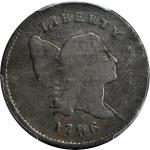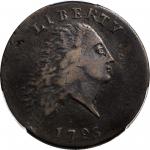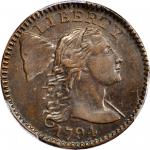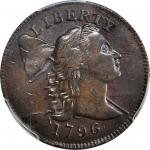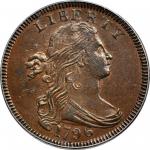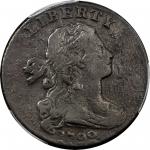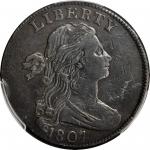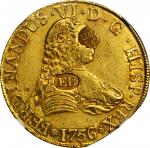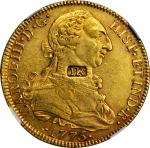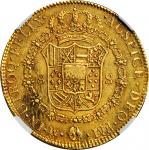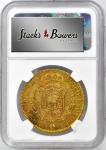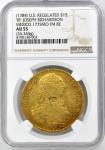(Before 1777) Joseph Richardson, Sr. Regulated Mexican 1775 Mexico City Mint 8 Escudos ($15). 26.344 grams. AU-55 (NGC). Circumferentially Adjusted, Countermarked IR.The present lot is a very significant emergence in the field of regulated gold. It is one of just four examples bearing the mark believed to be that of Philadelphia goldsmith Joseph Richardson, Sr. The touchmark, a simple "IR" within a rectangular cartouche, had been historically enigmatic to scholars attempting to make sense of the patchwork of initials and weights that comprises the discourse of regulated gold. Writing in 1987, specialist Ralph Gordon resisted assigning a name to this simple acronym, merely referring to the regulator as "IR." Three decades of research have thankfully shed some light on the specifics of Joseph Richardson, Sr.s operations, though not quite enough for certainty as to which Richardsons hand may have applied the mark. Though earlier attributed to his son, Joseph Richardson, Jr., specialist John Kraljevich, Jr. concluded that the present mark was the stamp of Joseph Richardson, Sr. in cataloging another Richardson piece for our May 2016 Rarities Auction. The three examples known at the time were all on host coins dating 1730, 1746 and 1752, evidence that supported the attribution of the mark to Richardson, Sr. The appearance of this 1775-dated specimen with the same mark inserts a degree of uncertainty into the matter in that Richardson Sr. was no longer active after 1777, placing the regulation of this piece precariously close to the end of the elder Richardsons career. Still, whether applied by Richardson, Sr. or Jr. is but a minor difference in terms of the significance of the mark. Joseph Richardson, Sr. was an accomplished gold and silversmith and the designer of two important Betts medals, the 1756 Kittanning Destroyed medal and the 1757 Quaker Indian Peace medal, which were the first two medals produced in the British colonies. His son, Joseph Richardson, Jr. was likewise accomplished and later became a U.S. Mint assayer and maker of the famed George Washington oval Indian Peace medals. Both Richardsons are key figures of early American numismatics. The punch itself is believed to be that of Richardson, Sr., as his sons mark is usually "J.R" so we have maintained this attribution recognizing, however, that the punch might well have been used in the same shop under his sons tutelage.The IR stamp is nearly centered on the neck of Carlos III, rotated slightly counterclockwise. The impression is deep and uniform, exhibiting evidence of rust pitting and polishing in the recess of the mark that was present on the punch itself. Light wear is seen in the fields and high points of the coin throughout, with undisturbed reflectivity still present in the protected regions. Magnification will reveal a thin pinscratch through the left obverse legend that is unlikely to be detected otherwise. The overall pleasing honey yellow gold is blended with a palette of amber and magenta that deepen toward the borders, imparting a most pleasant aesthetic. A small area of streaked patina is noted at the lower left reverse.With a modern weight of 406.55 grains, this piece was clearly regulated to the same 408 grains (17 dwt) standard that governed more prolific regulators like Ephraim Brasher and John Burger working in the decades following Joseph Richardson, Sr. Though this standard was prevalent during the American Revolution and eventually solidified by the New York Chamber of Commerce in May 1784, the elder Richardson had been regulating to this standard at least as early as the mid-1770s. In October 1777 he was among the several dozen Philadelphia merchants who published a petition calling on those in the business community to accept Continental Currency and insisting upon a 4 dwt 6 grains (102 grains) standard for the Spanish pistole, the quarter unit of the 8 escudos. The backing of this petition likely occurred in close proximity to the regulation of this piece to that very standard. Weight and value tables for circulating coinage that accompanied scales sold by Richardson, Sr. also corroborate his adherence to the 17 dwt standard of the present piece. Advertised as early as 1744 and imported from London, the earlier sets of scales included tables suggesting that 4 Spanish pistole pieces should weight 16 dwt 20 grains, with later versions declaring an appropriate weight of 17 dwt, an adjustment that likely coincided with the onset of the Revolution. The three other coins with this IR countermark have been regulated to a 216 grain (9 dwt) standard also outlined in the October 1777 petition and listed on all scale tables seen by your cataloger, further asserting this stamp as the work of Joseph Richardson, Sr. While this newly emerged piece bearing the Richardson mark certainly provides more insight into the complex realm of regulated coinage, it also encourages further research into this fascinating and long underappreciated field. Though regulated gold as a class is generally quite rare today, we can imagine that this practice, undertaken for decades, produced many thousands of examples. As the system fell out of the realm of necessity with the production of gold coins at the U.S. Mint in 1795, it rapidly also fell from common awareness. By the mid-1800s commerce would have rejected such items completely, and the last group that might have rightfully been interested in their preservation, coin collectors, was most likely largely unaware of the system, relegating most examples to the melting pot. With growing appreciation for these rarities today, we are fortunate indeed that a few have survived to better illustrate this brief inclusion in the story of American numismatics.



